Learn how to make this fall staple using boiled pumpkin! With 5 minutes of prep, you can have a homemade pumpkin puree that is cheaper and better than the canned stuff. Just 1 ingredient and NO oven is needed!

It's pumpkin season, friends! This means it's time to learn how to make your own homemade pumpkin puree with just 1 ingredient!
And since we're using boiled pumpkin, you don't even need to turn on the oven, it's all happening right on the stovetop!
This puree is perfect for any type of pumpkin dessert, including my Pumpkin Pie without Evaporated Milk, Pumpkin Pancakes, Pumpkin Baked Oatmeal without Eggs, and Stovetop Pumpkin Pie Oatmeal.
Jump to:
Why You'll Love This Recipe
- This is a quick and easy method using boiled pumpkin made without oven. It's very similar to the method companies use to make canned pumpkin puree.
- Once you have it in the fridge, you can use it for both savory and sweet dishes. From pumpkin pie, pumpkin pancakes, and pumpkin oatmeal, to vegan mac and cheese, hot chocolate, and even hummus!
- You can make a big batch and freeze it for later. This way, you'll have pure pumpkin puree ready to be thawed and used at any given point.
- This is an easy way to reduce waste. By making your own pumpkin puree, you not only save a few bucks here and there, but you also save on waste by not using the canned one. It's a win-win!
Ingredients You'll Need

- Pumpkin: When it comes to choosing the right pumpkin, always try to go for smaller pumpkins because they have a more concentrated pumpkin flavor. For the best types of pumpkin for pumpkin puree, check out the section below.
- Water: You'll need just enough water to barely cover the pumpkin.
See the recipe card below for exact measurements.
Best Pumpkin For Pumpkin Puree
- Small sugar pumpkin (aka pie pumpkin). This is the BEST pumpkin to use when making any type of puree, but especially one without an oven. Sugar pumpkin is sweeter and packs more pumpkin flavor. Not only that, but it also has a softer, creamier flesh, which blends perfectly.
- Small Hokkaido pumpkin (aka Red Kuri). Can't find sugar pumpkins? This will be your second-best choice. This type of pumpkin has less water and is sweeter than carving pumpkins.
- Butternut squash (aka Matilda pumpkin). This is also a good choice if you can't find the two above. It's delicious eaten on its own, but also roasted or boiled for puree.
- Acorn squash. It's less sweet and slightly nutty but can work in a pinch.
- Kabocha squash (aka Japanese squash). Another great pumpkin for making puree. This one has a denser flesh, somewhere between sweet potato and pumpkin, but it's still sweet and buttery.
- Cinderella Pumpkin. It's milder than some other types of pumpkin, but when it gets roasted or boiled, it has a sweet flavor and gets smooth and creamy on the inside.
What not to use
- Spaghetti squash. This type of pumpkin is too stringy and doesn't have that creamy flesh compared to the other types mentioned above. I try to stay away from it when it comes to puree, but it's delicious when making spaghetti squash.
- Decorative pumpkins (like autumn gold or Jack-o-lantern pumpkins). These are not as sweet and rich, and have a stringy texture, which doesn't make for a good, creamy puree.
How to Make Pumpkin Puree Using Boiled Pumpkin
Step 1: Boil pumpkin
Half the pumpkin using a sharp knife. Then, remove the pumpkin seeds using a large spoon (save them to make roasted pepitas later).
Cube, peel, and transfer the pumpkin pieces into a large pot like a Dutch oven. Add just enough water to barely cover it and boil with the lid on for 15-25 minutes.

To check for doneness, poke one piece with a fork. If the pumpkin is soft and fork-tender, it's ready.
Using a spider strainer or a fine mesh strainer, scoop out the cooked pumpkin from the pot, let any excess water drain off, and transfer it to a food processor.

Step 2: Blend into a puree
Let it cool for a little bit to avoid hot splashes of pumpkin puree coming into contact with your skin.
Using a high-speed food processor, blend on high for 2-3 minutes, or until you have a smooth puree and no chunks remain.

If you don't have a food processor, feel free to use a high-speed blender or an immersion blender.
You may need to blend it in batches if your food processor is too small.

Step 3: Cook it down
Transfer the pureed pumpkin back to the pot (use the same pot as before) and heat it over medium-high heat.
Cook for 20-30 minutes, stirring occasionally, or until most of the liquid evaporates and the mixture is half as much as in the beginning.
Hint: How long you cook the puree will depend on how watery it is. For a very watery puree, you may need to cook it for as much as 40 minutes.

Finally, let it cool down before storing it in the refrigerator for later use, or use it in a recipe right away.
Expert Tips
- Use as little water as possible. Since the pumpkin will absorb some of that liquid, you want to use just enough water to barely cover the pieces. By placing the lid on, the pumpkin will steam while it's boiling, so there is no need to fill the pot to the brim.
- Cook down the puree until thickens. Most of the recipes online suggest you use a cheesecloth to drain excess liquid, but while testing this method, I found that the best way to do that is to cook it until that liquid evaporates. This way you get a much thicker pumpkin puree without needing to squeeze out the water.
- Choose the right type of pumpkin. Since we're using just 1 ingredient in this recipe, the quality of your pumpkin can make or break your puree. For best results, try to use smaller pumpkins since they have more pumpkin flavor. The best types of pumpkin for puree are sugar pumpkins aka pie pumpkins or Hokkaido pumpkins.
- Use a whole pumpkin. If you have a small enough pumpkin that will fit in your pot, there is no need to peel and chop it. Simply place it whole in a heavy-bottom pot like a Dutch oven and steam it for 30 minutes.
FAQ
The best way to thicken pumpkin puree is to cook it on the stovetop until some of the liquid evaporates. Add it to a saucepan and heat over medium-high heat for 10-15 minutes, stirring occasionally.
If you want to thicken a big batch of puree, add it to a large pot and cook for 25-30 minutes, stirring occasionally
Using boiled pumpkin for pumpkin puree introduces extra moisture, which can lead to a watery puree. To fix that, either strain the puree through a nut milk bag or for better results, follow the method mentioned in the previous question.
If you don't have a food processor, feel free to use a high-speed blender or an immersion blender.
Alternatively, you can add pumpkin to a large bowl and using a potato masher, mash until it's very smooth and turns into a puree. If you have a potato ricer on hand, that could also be helpful to "rice" the pumpkin before mashing it.
Roasting is considered the preferred method when making pumpkin puree because it removes moisture in the process.
However, do you know that most canned pumpkin purees are actually made using boiled pumpkin? I surely didn't! This means that you can make a great puree even without oven.

Alternative Cooking Methods
- Instant pot/pressure cooker: To start, cut a circle off the top of the pumpkin and remove the seeds inside. Place the pumpkin cut-side-up on a steaming rack inside your instant pot. Pour 1 cup (235ml) of water into the bottom of the pot. Turn the knob to sealing, cover with the lid, and cook on high pressure for 15-20 minutes, depending on the size of the pumpkin. Manually release the pressure for 5 minutes, then remove the lid. Check if the pumpkin is soft by inserting a knife into it. If it's not fork-tender, cook for 5 more minutes, releasing the pressure manually again. Let it cool completely before peeling off the skin and blending.
- Air fryer: Place a small whole pumpkin onto the air fryer. If the pumpkin is too big, cut it in half and remove the seeds. Air fry at 400ºF (205ºC) for 30-35 minutes, flipping it upside down halfway through. Check if the pumpkin is soft by inserting a knife into it. If it's not tender, cook for 5-10 more minutes. Let it cool completely before peeling off the skin and blending.
- Microwave: Cut the pumpkin in half, remove the seeds, then peel. Cut into 2-inch pieces. Add to a microwave-safe shallow bowl and add a little bit of water at the bottom. Cover with a microwave-safe lit or another bowl. Microwave for 7-8 minutes, or until fork tender. Smaller pieces take less time to cook, so adjust the cooking time as needed. Let cool for 10 minutes before blending into a puree.
- Steaming on the stovetop: Cut the pumpkin in half, remove the seeds, then peel. Cut into 2-inch pieces. Add in a steamer basket placed over a pot of boiling water and cook for 10-15 minutes or until fork tender. Let cool for 10 minutes before blending into a puree.
- Roasting: Preheat oven to 400ºF (205ºC). Cut the pumpkin in half, and remove the seeds. Then, place the pumpkin halves cut-side up on a baking sheet layered with parchment paper. If you're using it for savory recipes, brush the inside with olive oil before cooking. Bake for 30-35 minutes, or until the pumpkin flesh until fork tender. Let cool before peeling the skin and blending into a puree.
- Slow cooker: Cut the pumpkin in half, remove the seeds, then peel. Cut into 2-inch pieces. Add to a slow cooker with enough water to barely cover the pumpkin. Cover the lid and cook on high for 4 hours, or until fork-tender.
How To Use It
I'm seriously not joking when I say there are a hundred ways to use this boiled pumpkin puree without oven!
It's obviously delicious in classic baked goods like homemade pumpkin pie, pumpkin pancakes, pumpkin bread, and pumpkin baked oatmeal.
But did you know you can add it to homemade mac and cheese, sweet potato soup, and even hummus?
And no, we don't stop there, because we can't talk about pumpkin without mentioning pumpkin spice latte, or better yet, pumpkin spice hot chocolate or pumpkin bubble tea.

Storage
Let the puree cool to room temperature. then, transfer it to an airtight container and cover it with a lid. Save in the fridge for up to 5 days.
To freeze, either transfer it to a zip-log back or a freezer-safe airtight container, and freeze for up to 3 months (and sometimes longer).
You can also freeze it in a large ice cube tray if you want to have individual portions.
Favorite Pumpkin Recipes
📖 Recipe

Pumpkin Puree Using Boiled Pumpkin (No Oven!)
Equipment
- Dutch oven or another heavy-bottomed large pot
- Spider strainer or a fine mesh strainer
Ingredients
- 2 lb sugar pie pumpkin or Hokkaido pumpkin or butternut squash
- Water, to cover
Instructions
- For more alternative cooking methods, read the section in the post above.
Cubed pumpkin
- Half the pumpkin using a sharp knife. Then, remove the pumpkin seeds using a large spoon (save them to make roasted pepitas later). Peel, then cut into 2-inch cubes. (See photos above for reference.)2 lb sugar pie pumpkin
- Transfer the pumpkin pieces into a large pot like a Dutch oven. Add just enough water to barely cover it and boil with the lid on for 15-25 minutes.
- To check for doneness, poke one piece with a fork. If the pumpkin is soft and fork-tender, it's ready. Using a spider strainer or a fine mesh strainer, scoop out the cooked pumpkin from the pot, let any excess water drain off, and transfer it to a food processor.
- Let it cool for a little bit to avoid hot splashes of pumpkin puree coming into contact with your skin. Using a high-speed food processor, blend on high for 2-3 minutes, or until you have a smooth puree and no chunks remain. You may need to blend it in batches if you're pumpkin is too big and your food processor is too small.
- Transfer the pureed pumpkin back to the pot (use the same pot as before) and heat it over medium-high heat. Cook for 20-30 minutes, stirring occasionally, or until most of the liquid evaporates and the mixture is half as much as in the beginning. (See photos above for reference.) (How long you cook the puree will depend on how watery it is. For a very watery puree, you may need to cook it for as much as 40 minutes.)
- Finally, let it cool down before storing it in the refrigerator for later use, or using it in a recipe right away.
Whole pumpkin
- If you have a small enough pumpkin that will fit in your pot, there is no need to peel and chop it. Simply place it whole in a heavy-bottom pot like a Dutch oven and add enough water to cover the bottom. Close with the lid and steam for 30-40 minutes (depending on the size), making sure to add more water if it evaporates.2 lb sugar pie pumpkin
- It's ready when the flesh is soft and you can easily insert a fork. Using kitchen tongs, carefully remove it from the pot and set it on a plate or a cutting board to cool completely. Cut it in half, scoop out the flesh using a spoon, and transfer it to a food processor. Blend until it's completely smooth and no chunks remain,
- Transfer the pureed pumpkin back to the pot (use the same pot as before) and heat it over medium-high heat. Cook for 20-30 minutes, stirring occasionally, or until most of the liquid evaporates and the mixture is half as much as in the beginning. (How long you cook the puree will depend on how watery it is. For a very watery puree, you may need to cook it for as much as 40 minutes.)
- Finally, let it cool down before storing it in the refrigerator for later use, or using it in a recipe right away.
Notes
- Fridge: Let the puree cool to room temperature. then, transfer it to an airtight container and cover it with a lid. Save in the fridge for up to 5 days.
- Freezer: To freeze, either transfer it to a zip-log back or a freezer-safe airtight container and freeze for up to 3 months (and sometimes longer). You can also freeze it in a large ice cube tray if you want to have individual portions.
Nutrition
Nutrition information is a rough estimate calculated with third-party calculations without including the optional ingredients.



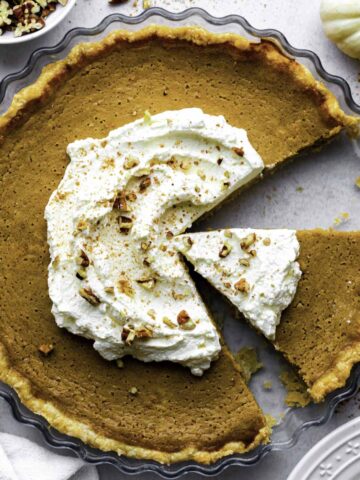
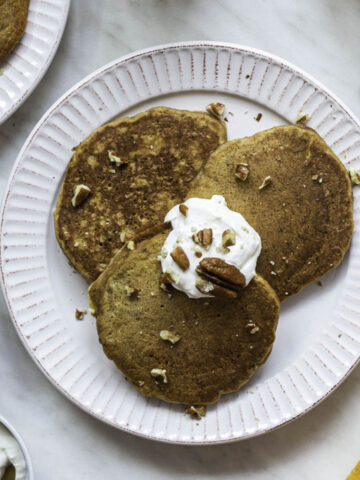
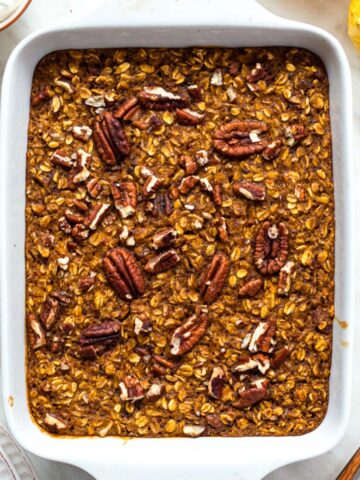
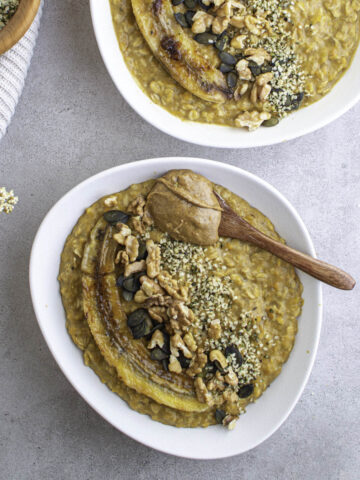
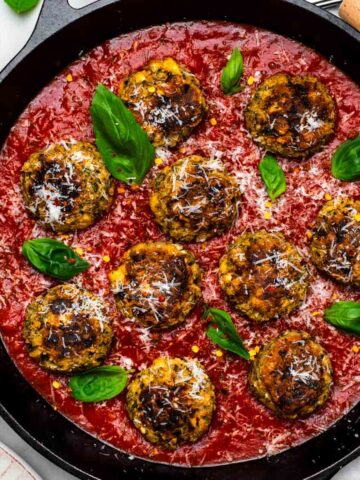
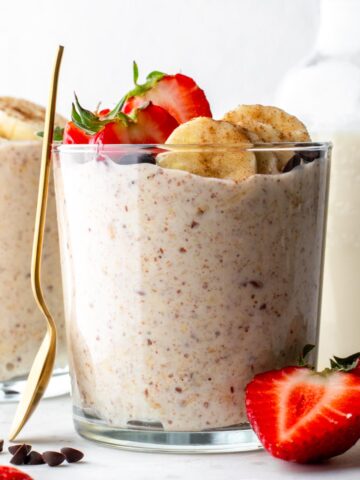

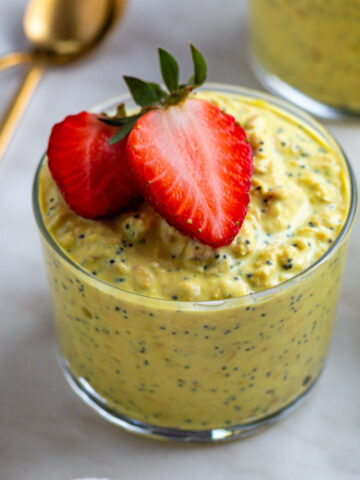
Leave a Reply